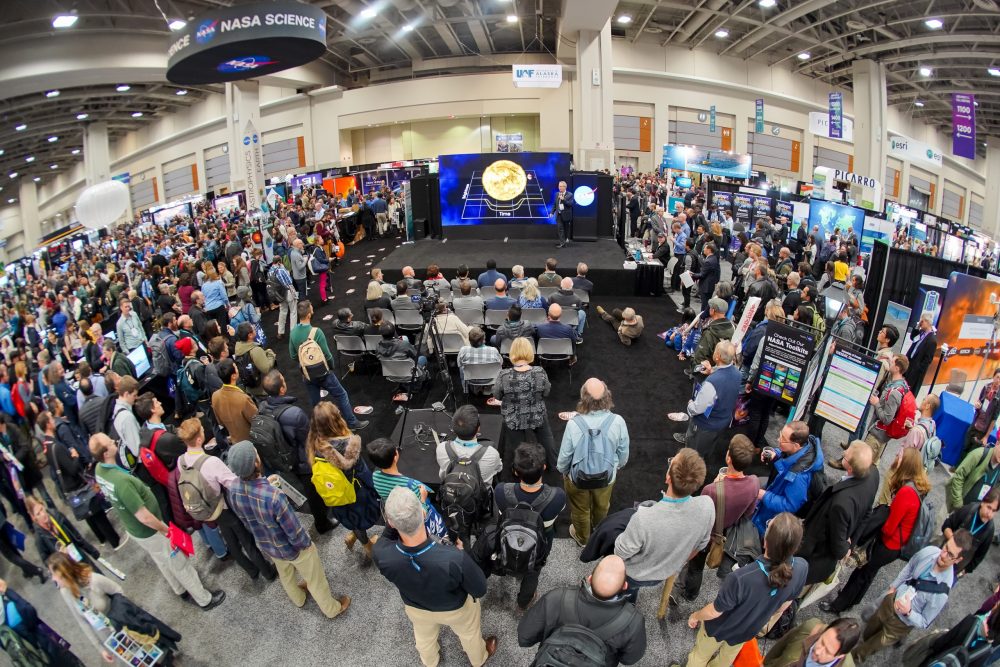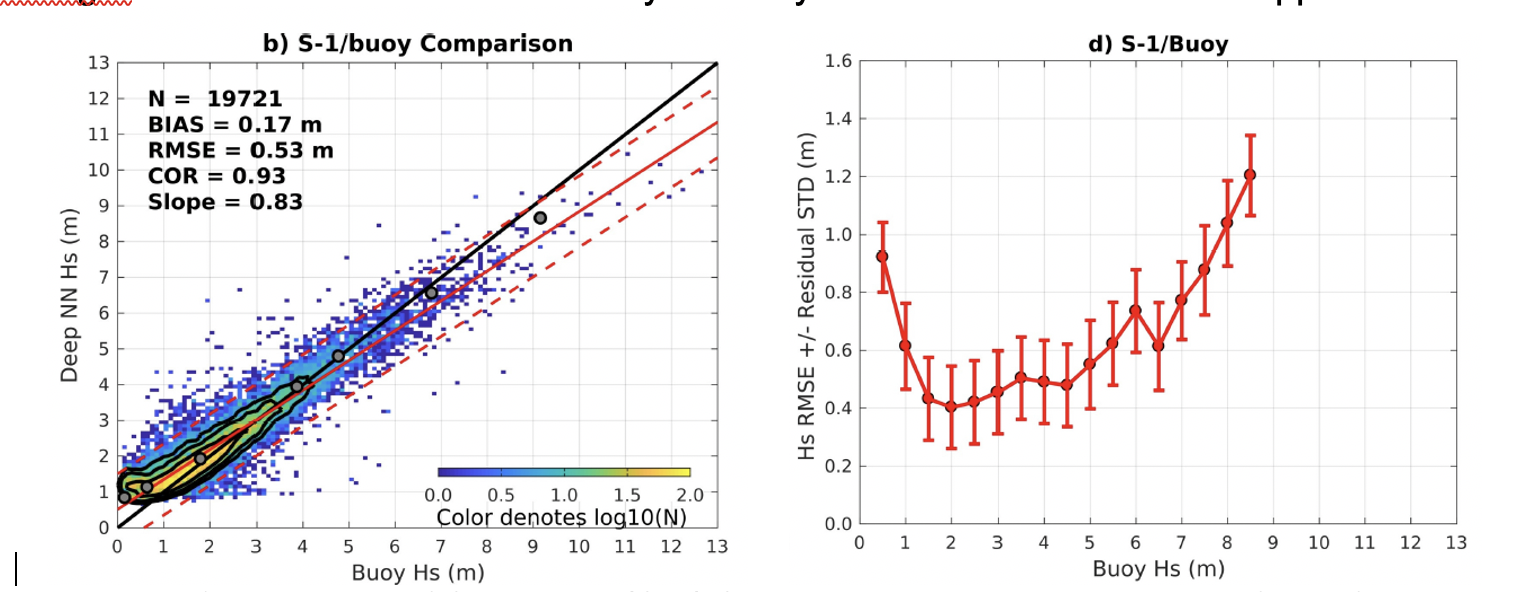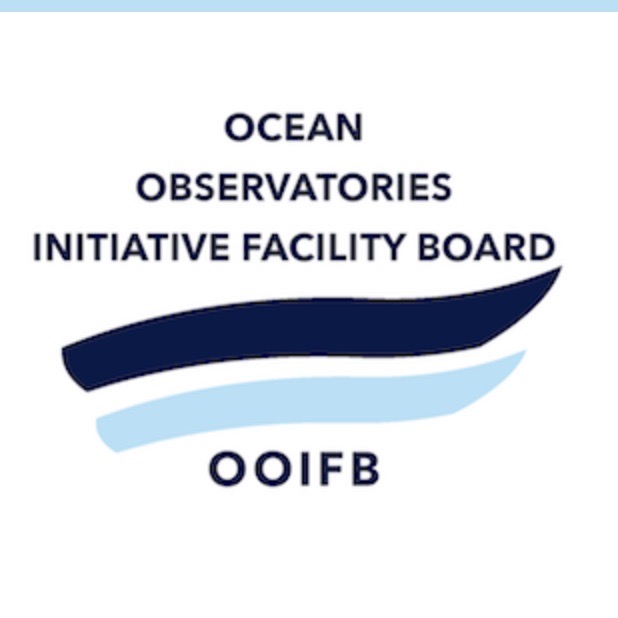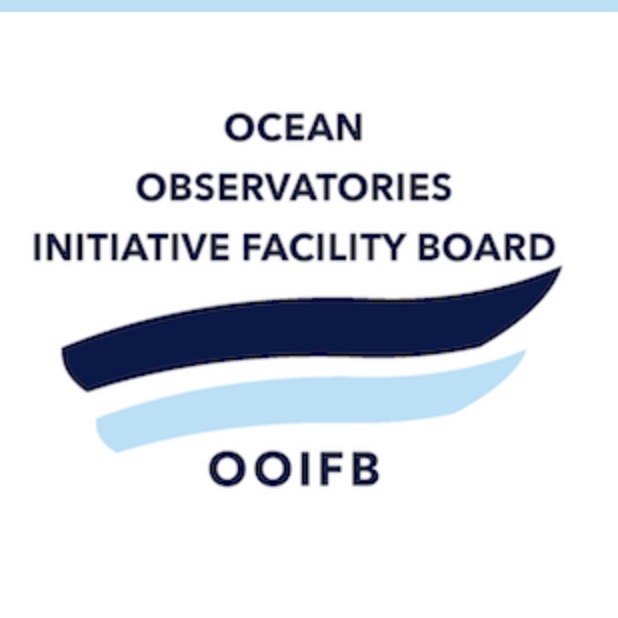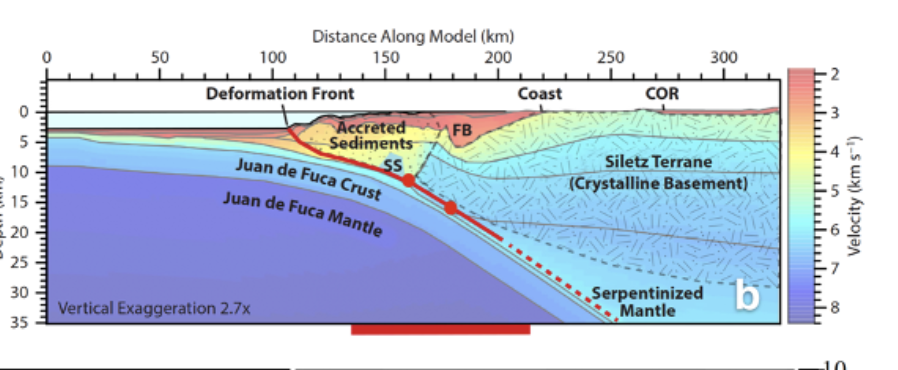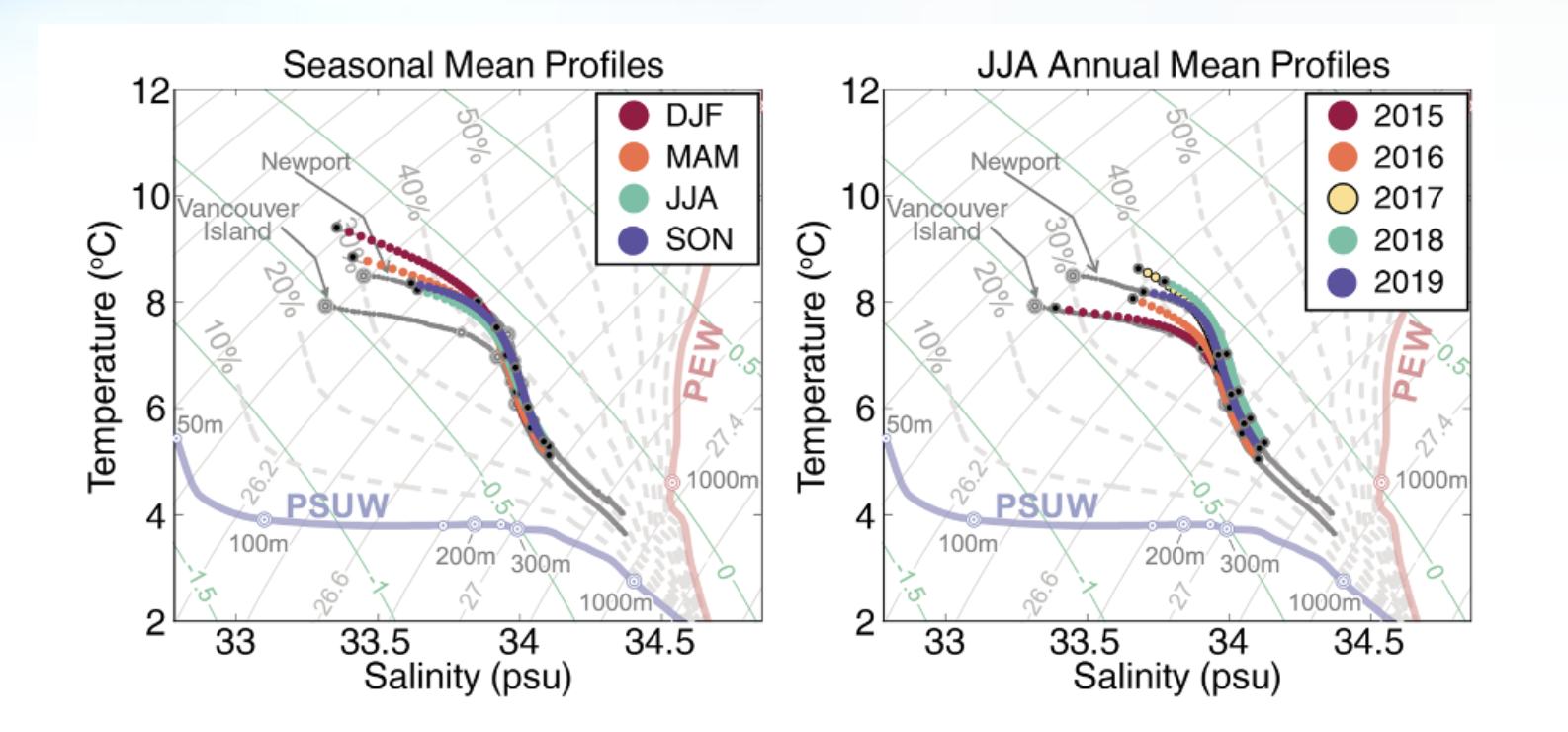Posts by ooistaff
Recordings of OOI Events at AGU
Just in case you missed some of the events at OOI’s virtual booth at AGU, we’ve compiled some recordings and information so you can watch as your schedule allows:
[embed]http://https://youtu.be/Wuc-Be-IFVA[/embed] [embed]https://www.youtube.com/watch?v=WuEXjlXl-HM&t=5s[/embed] [embed]https://www.youtube.com/watch?v=bWqvOzyYirE[/embed]How Scientists are Using OOI Data to Advance Their Research
Learn How to Create a Data View
[embed]https://youtu.be/uRd0Js9L0-I[/embed]Virtual Tours
[embed]https://www.youtube.com/watch?v=3w3RyvUGeLA[/embed] [embed]https://www.youtube.com/watch?v=GqJdkqI-unw&t=19s[/embed] [embed]https://youtu.be/epkV9K6_w4U[/embed] Read MoreJoin in the Conversation: New Forum Live!
[media-caption path="/wp-content/uploads/2020/11/Discourse_logo.png" link="#"]Source: Discourse Team[/media-caption]
The Ocean Observatories Initiative would like to hear from all data users and potential data users. To that end, we have launched a platform on Discourse to encourage “discourse.” The OOI Data Users Discussion Forum is a place where scientists, educators, and other data users can come together to ask and have questions answered and share how OOI data are being used to advance research and learning.
Some of the topics covered are
- data tools (where you can learn new techniques for using data)
- known data and system issues and updates on their status
- potential funding and job opportunities
- FAQS that will help you navigate and use OOI data
- HelpDesk, where you can seek help and learn about other help requests that may shed light on your question
- news and announcements that are relevant to using OOI data in research and in the classroom.
Since it is a user-based forum, you can add categories and questions of interest to you.
Sign on today or bookmark this url https://discourse.oceanobservatories.org/ for future engagement. Once you sign up, you will receive an email confirming you are not a bot, then the conversation can begin.
We are looking forward to some lively discussions! See you online.
Read More
OOI’s AGU Virtual Booth and Sessions Schedule 2020
OOI’s Virtual Booth
The Ocean Observatories Initiative has a full plate of activities at its virtual AGU booth during AGU’s exhibit hall hours. Registration is required for the 11 am-noon time slots, indicated below.
Friday 11 December
- 11 am-noon Eastern: Learn how to create data views using the new Date Explorer: Register here.
OOI Data Team and Coastal Endurance team member Craig Risien will guide us through the steps of creating a data view using Coastal Endurance array data to demonstrate this feature of OOI’s new data discovery tool, Data Explorer.
- 1-1:30 pm Eastern: Ask an expert about what scientists are learning using OOI data. Join here.
Join William Wilcock, University of Washington, and Hilary Palevsky, Boston College, to hear what they have learned using OOI data and how you might do the same.
- 6-7 pm Eastern: Early Career Scientists’ Happy Hour. Join here.
Close down the OOI virtual booth by joining your friends and colleagues at a virtual hour. This is an opportunity to network, reconnect with friends and colleagues, and raise a glass together.
All activities other than the 11 am time slots and Friday’s happy hour can be accessed here. Look forward to seeing you soon!
___________________________________________________________________________________________
OOI-Related Sessions
Friday, 11 December 2020
07:00 – 23:59
Posters
B060-0022 Western boundary current instability gives rise to extraordinary subsurface diatom blooms in the Middle Atlantic Bight slope sea
Hilde Oliver1, Weifeng Gordon Zhang1, Walker O Smith Jr2, Philip Alatalo3, Dreux Chappell4, Andrew Hirzel1, Gwyneth Packard5, Corday Selden6, Judson Poole1, Heidi M Sosik1, Rachel Stanley7, Yifan Zhu4 and Dennis Joseph McGillicuddy Jr8, (1)Woods Hole Oceanographic Institution, Woods Hole, MA, United States, (2)Virginia Inst Marine Sciences, Gloucester Point, VA, United States, (3)Woods Hole Oceaonographic Institution, Woods Hole, MA, United States, (4)Old Dominion University, Ocean, Earth and Atmospheric Sciences, Norfolk, VA, United States, (5)Woods Hole Oceanographic Institution, Woods Hole, United States, (6)Cuernavaca, Mexico, (7)Wellesley College, Wellesley, MA, United States, (8)Woods Hole Oeanographic Institution, Woods Hole, MA, United States
Monday, 14 December 2020
07:00 – 23:59
Posters
OS037-0009 Sustained Ocean Observatories Initiative Glider Measurements Over the Oregon and Washington Shelves
Stuart Pearce, Oregon State University, College of Earth, Ocean, and Atmospheric Sciences, Corvallis, OR, United States, Jonathan Whitefield, Oregon State University, College of Earth Ocean and Atmospheric Sciences, Corvallis, OR, United States and Edward Paul Dever, Oregon State University, Corvallis, OR, United States
A151-0011 On the Impact of High-Frequency Wind Variability on Upper Ocean Stratification
Natalie M Freeman, University of Colorado at Boulder, Department of Atmospheric and Oceanic Sciences, Boulder, CO, United States, Donata Giglio, University of Colorado Boulder, Department of Atmospheric and Oceanic Sciences, Boulder, CO, United States, Sarah T Gille, UCSD, La Jolla, CA, United States and Momme Claus Hell, University of California San Diego, Scripps Institution of Oceanography, La Jolla, CA, United States
ED037-0031 What drives variability in nitrate concentration off the Oregon Coast?
Bailey Armos, University of Washington, Oceanography, Seattle, WA, United States and Edward Paul Dever, Oregon State University, Corvallis, OR, United States
ED037-0035 Ocean pCO2 Variability and Drivers at the US Atlantic Coastal Pioneer Array
Alison Thorson, Sarah Lawrence College, Bronxville, NY, United States and Rachel Eveleth, Oberlin College, Oberlin, United States
OS036-0005 Dissolved Oxygen Over The Oregon And Washington Shelves Observed From Sustained Glider, Profiler, And Fixed Depth Time Series
Edward Paul Dever1, Jonathan P Fram2, Michael Vardaro3,4, Wendi Ruef5, Orest Eduard Kawka5, Jack A Barth6, Craig M Risien2, Christopher E Wingard2, Stuart Pearce2 and Jonathan Whitefield1, (1)Oregon State University, Corvallis, OR, United States, (2)Oregon State University, College of Earth, Ocean, and Atmospheric Sciences, Corvallis, OR, United States, (3)Rutgers University, Department of Marine and Coastal Sciences, NJ, United States, (4)University of Washington Seattle Campus, Oceanography, Seattle, WA, United States, (5)University of Washington, School of Oceanography, Seattle, WA, United States, (6)Oregon State University, Marine Studies Initiative, Corvallis, OR, United States
ED037-0044 Vertical Zooplankton Distribution on Continental Slope off Oregon Coast
Lydia Sgouros, Case Western Reserve University, Cleveland, OH, United States and Edward Paul Dever, Oregon State University, Corvallis, OR, United States
Wednesday 16, December 2020
07:00 – 23:59
Posters
V040-0016 Monitoring Hydrothermal Plumes at ASHES Vent Field, Axial Seamount through Quantitative Acoustic Imaging
Guangyu Xu, Applied Physics Laboratory University of Washington, Acoustics, Seattle, WA, United States, Karen G Bemis, Rutgers, The State University of New Jersey – New Brunswick, Marine and Coastal Sciences, New Brunswick, NJ, United States, Darrell Jackson, University of Washington Seattle Campus, Applied Physics Laboratory, Seattle, WA, United States and Anatoliy N. Ivakin, Applied Physics Laboratory University of Washington, Seattle, WA, United States
14:50 – 14:54
Virtual Talk
V043-06 Repeated Short-Term Deflation Events Observed During Long-Term Inflation at Axial Seamount
William W. Chadwick Jr1, Scott L Nooner2, William S D Wilcock3, Suzanne M Carbotte4, Audra Meaghan Sawyer5, Erik K Fredrickson3 and Jeff W Beeson1, (1)Oregon State University, CIMRS, Newport, OR, United States, (2)University of North Carolina at Wilmington, Dept of Earth and Ocean Sciences, Wilmington, NC, United States, (3)University of Washington, School of Oceanography, Seattle, WA, United States, (4)Lamont-Doherty Earth Obs, Palisades, NY, United States, (5)University of North Carolina at Wilmington, Wilmington, NC, United States
Read More
OOI at AGU 2020
[media-caption path="/wp-content/uploads/2020/10/agufront2-scaled-e1603490292321.jpeg" link="#"]The AGU 2020 Fall Meeting will not be like the 2019 pictured here, but OOI will still have a large presence. [/media-caption]
OOI will be a force at the first online AGU Fall meeting. Join your colleagues as they present their latest scientific findings made possible using OOI data. OOI will also be hosting a virtual booth at AGU this year. Like the meeting of the past, it will provide a place to gather, share experiences, and learn more about OOI.
We have a robust schedule of activities at the OOI exhibit booth (each day at 11 am, 1 pm, and 6 pm) during the week of 7 December. Have a look here. Pre-registration is needed for the 11 am time slots, but all others are accessible with a click of a link. Hope to see you there!
If we’ve missed any OOI-related sessions, please contact dtrewcrist@whoi.edu and we will be happy to add them. Otherwise, see you all online. Hope you will share your stories at #AGU20OOI.
Monday, 7 December 2020
07:00 – 23:59
Posters
ED004-0045 Magnitude and Drivers of the Seasonal Cycle and Interannual Variability of pCO2 in the Washington Coast OOI Endurance Array
Brianna Velasco, Humboldt State University, Arcata, CA, United States, Rachel Eveleth, Oberlin College, Oberlin, United States and Alison Thorson, Sarah Lawrence College, Bronxville, NY, United States
Tuesday, 8 December 2020
10:00-11:00
Ocean Observatories Initiative Facility Board Town Hall
Wednesday, 9 December 2020
19:42 – 19:45
Virtual Talk
V018-14 Submarine Volcano-Hydrothermal Systems and Their Impacts on the Overlying Ocean: Quantification of Erupting Mid-Ocean Ridge Volcanoes- A Generational Goal
John R Delaney1, Dana Manalang2, Kendra L Daly3, Deborah S Kelley4, William S D Wilcock1, Edward T Baker5 and Douglas S Luther6, (1)University of Washington, School of Oceanography, Seattle, WA, United States, (2)University of Washington, Applied Physics Lab, Seattle, WA, United States, (3)University of South Florida, College of Marine Science, St. Petersburg, FL, United States, (4)University of Washington Seattle Campus, School of Oceanography, Seattle, WA, United States, (5)NOAA Pacific Marine Environmental Laboratory, Seattle, WA, United States, (6)Univ Hawaii Manoa, Honolulu, HI, United States
Friday, 11 December 2020
07:00 – 23:59
Posters
B060-0022 Western boundary current instability gives rise to extraordinary subsurface diatom blooms in the Middle Atlantic Bight slope sea
Hilde Oliver1, Weifeng Gordon Zhang1, Walker O Smith Jr2, Philip Alatalo3, Dreux Chappell4, Andrew Hirzel1, Gwyneth Packard5, Corday Selden6, Judson Poole1, Heidi M Sosik1, Rachel Stanley7, Yifan Zhu4 and Dennis Joseph McGillicuddy Jr8, (1)Woods Hole Oceanographic Institution, Woods Hole, MA, United States, (2)Virginia Inst Marine Sciences, Gloucester Point, VA, United States, (3)Woods Hole Oceaonographic Institution, Woods Hole, MA, United States, (4)Old Dominion University, Ocean, Earth and Atmospheric Sciences, Norfolk, VA, United States, (5)Woods Hole Oceanographic Institution, Woods Hole, United States, (6)Cuernavaca, Mexico, (7)Wellesley College, Wellesley, MA, United States, (8)Woods Hole Oeanographic Institution, Woods Hole, MA, United States
Monday, 14 December 2020
07:00 – 23:59
Posters
OS037-0009 Sustained Ocean Observatories Initiative Glider Measurements Over the Oregon and Washington Shelves
Stuart Pearce, Oregon State University, College of Earth, Ocean, and Atmospheric Sciences, Corvallis, OR, United States, Jonathan Whitefield, Oregon State University, College of Earth Ocean and Atmospheric Sciences, Corvallis, OR, United States and Edward Paul Dever, Oregon State University, Corvallis, OR, United States
A151-0011 On the Impact of High-Frequency Wind Variability on Upper Ocean Stratification
Natalie M Freeman, University of Colorado at Boulder, Department of Atmospheric and Oceanic Sciences, Boulder, CO, United States, Donata Giglio, University of Colorado Boulder, Department of Atmospheric and Oceanic Sciences, Boulder, CO, United States, Sarah T Gille, UCSD, La Jolla, CA, United States and Momme Claus Hell, University of California San Diego, Scripps Institution of Oceanography, La Jolla, CA, United States
ED037-0031 What drives variability in nitrate concentration off the Oregon Coast?
Bailey Armos, University of Washington, Oceanography, Seattle, WA, United States and Edward Paul Dever, Oregon State University, Corvallis, OR, United States
ED037-0035 Ocean pCO2 Variability and Drivers at the US Atlantic Coastal Pioneer Array
Alison Thorson, Sarah Lawrence College, Bronxville, NY, United States and Rachel Eveleth, Oberlin College, Oberlin, United States
OS036-0005 Dissolved Oxygen Over The Oregon And Washington Shelves Observed From Sustained Glider, Profiler, And Fixed Depth Time Series
Edward Paul Dever1, Jonathan P Fram2, Michael Vardaro3,4, Wendi Ruef5, Orest Eduard Kawka5, Jack A Barth6, Craig M Risien2, Christopher E Wingard2, Stuart Pearce2 and Jonathan Whitefield1, (1)Oregon State University, Corvallis, OR, United States, (2)Oregon State University, College of Earth, Ocean, and Atmospheric Sciences, Corvallis, OR, United States, (3)Rutgers University, Department of Marine and Coastal Sciences, NJ, United States, (4)University of Washington Seattle Campus, Oceanography, Seattle, WA, United States, (5)University of Washington, School of Oceanography, Seattle, WA, United States, (6)Oregon State University, Marine Studies Initiative, Corvallis, OR, United States
ED037-0044 Vertical Zooplankton Distribution on Continental Slope off Oregon Coast
Lydia Sgouros, Case Western Reserve University, Cleveland, OH, United States and Edward Paul Dever, Oregon State University, Corvallis, OR, United States
Wednesday 16, December 2020
07:00 – 23:59
Posters
V040-0016 Monitoring Hydrothermal Plumes at ASHES Vent Field, Axial Seamount through Quantitative Acoustic Imaging
Guangyu Xu, Applied Physics Laboratory University of Washington, Acoustics, Seattle, WA, United States, Karen G Bemis, Rutgers, The State University of New Jersey – New Brunswick, Marine and Coastal Sciences, New Brunswick, NJ, United States, Darrell Jackson, University of Washington Seattle Campus, Applied Physics Laboratory, Seattle, WA, United States and Anatoliy N. Ivakin, Applied Physics Laboratory University of Washington, Seattle, WA, United States
14:50 – 14:54
Virtual Talk
V043-06 Repeated Short-Term Deflation Events Observed During Long-Term Inflation at Axial Seamount
William W. Chadwick Jr1, Scott L Nooner2, William S D Wilcock3, Suzanne M Carbotte4, Audra Meaghan Sawyer5, Erik K Fredrickson3 and Jeff W Beeson1, (1)Oregon State University, CIMRS, Newport, OR, United States, (2)University of North Carolina at Wilmington, Dept of Earth and Ocean Sciences, Wilmington, NC, United States, (3)University of Washington, School of Oceanography, Seattle, WA, United States, (4)Lamont-Doherty Earth Obs, Palisades, NY, United States, (5)University of North Carolina at Wilmington, Wilmington, NC, United States
Read More
Potential Relocation of the OOI Pioneer Array Discussion 8 Dec
The National Science Foundation (NSF) will present plans to use an “Ideas Lab”, a participatory, immersive process designed to innovative the decision-making process for the potential move of the Ocean Observatories Initiative (OOI) Pioneer Array at the American Geophysical Union Fall Meeting. The presentation will be at the OOI virtual booth, on 8 December 11:15-noon Eastern. Lisa Clough, Section Head from NSF’s Division of Ocean Sciences, will describe the “Ideas Lab” process that will be used to determine if the Pioneer Array should be moved, and if so, to what location. She will be joined by Al Plueddemann, Project Scientist for OOI’s Coastal and Global Scale Nodes, who will speak to the operational considerations involved in a potential move of the Pioneer Array.
The Coastal Pioneer Array is currently located in the Middle Atlantic Bight, centered about 75 nautical miles south of Martha’s Vineyard, where the continental shelf-slope is highly productive. The area was chosen as the initial placement of the Pioneer Array to examine exchanges between the shelf and slope and the shelf ecosystem and provide insight into air-sea gas exchange, including carbon dioxide absorption. From the outset, NSF has committed to re-evaluating the placement of the Pioneer Array every five-to-seven years.
“Ideas Lab are designed to bring together people to innovate and invigorate their scientific and educational approaches. We hope by using this participatory process, current and future users of OOI data will deeply explore the opportunities of having an open-data real-time coastal ocean array in various locations within the US EEZ,” explained Clough. “It is our hope that by collectively considering what the optimal location for the Pioneer Array is, and to a certain extent what types of data will be collected and how, the decision-making process will also encourage new thinking.”
Plueddemann, who has been involved with 15 successful missions to recover and deploy equipment at the Pioneer Array, will introduce some of the technological, logistical and environmental considerations inherent in a decision to relocate the array.
“My role in this decision-making process is solely as an information broker,” explained Plueddemann. “Neither I nor anyone involved in the current Pioneer Array team will be involved in the process of deciding how and where the Pioneer Array might be relocated. Our role will be to inform and advise on the feasibility of different concepts.”
Regardless of the location decision, the current team at Woods Hole Oceanographic Institution will continue to operate the Pioneer Array. Their formal role as operators of the Array entails expertise in the deployment, recovery, and maintenance of the equipment.
Potential Relocation of the Pioneer Array: Participate in the Process
8 December from 11:15 am-noon
Read More
OOI Links Up with U.S. National Committee for the Ocean Decade
[media-caption path="/wp-content/uploads/2020/11/ODUS-Announcements-02-OS.jpg" link="#"]Ocean Decade U.S. is seeking innovative, potentially transformational, ideas about ocean science research. Honor your creativity and submit an “Ocean Shot.” Deadline is 1 December.[/media-caption]
The Ocean Observatories Initiative (OOI) has signed on as partner with the UN Decade of Ocean Science for Sustainable Development, which is geared toward scientists, policy makers, managers, and service users working together to ensure that ocean science delivers greater benefits for the ocean ecosystem and for society. OOI is part of the Ocean Decade’s Ocean Science and Technology community, making its ocean data available to the world community.
To help advance the United States involvement in the UN Decade program, OOI has also joined forces as a nexus organization with the U.S. National Committee for the Ocean Decade (Ocean Decade U.S.). The goal is to ensure that the U.S. ocean science community is aware of and participating in activities related to the UN Decade of Ocean Science.
“OOI offers a wealth of ocean data that is being used to advance understanding of ocean processes,” said John Trowbridge, lead of OOI’s program office at Woods Hole Oceanographic Institution. “We think it is important to offer this valuable resource up to the world community, and by so doing, contribute to the advancement of a sustainable ocean that benefits all users.”
Two opportunities currently exist for members of the OOI community to get involved:
Share your transformative research ideas
The Ocean Decade U.S. is seeking transformative research ideas known as “Ocean-Shots,” that draw inspiration and expertise from multiple disciplines and fundamentally advance ocean science for sustainable development. The hope is that such innovative ideas will spark potentially disruptive advances in ocean science for sustainable development. Applications are due before December 1, 2020, so the time is now to gather your colleagues together and consider proposing some innovative research ideas. To learn more, click here or if you already have a great innovative idea, use a simple online form to submit your winning idea. Submitted “Ocean Shots” will be presented at the Ocean Decade U.S. Kickoff meeting, January 13-14, 2021.
Early Career Scientist Candidates Sought
Knowing that the fate of the global ocean rests with future generations, the US National Committee for the Ocean Decade is also seeking to include early career perspectives in the activities of the Committee. Early career natural scientists, social scientists, engineers, resource managers, and policy specialists are encouraged to apply as liaisons to the Committee. Again, the application deadline is December 1, 2020. If you are looking to have a voice in what the ocean may look like in the future and how it is used, consider applying today.
Adds Trowbridge, “There is no better time than now to consider the future ocean and how it might can be sustainably used now so its many wonders and resources will be available to future generations.”
Read More
Buoy Wave Height Measurements Improve SAR Estimates
Excerpted from the OOI Quarterly Report, 2022.
Synthetic Aperture Radar (SAR) sensors on satellites measure backscatter from the ocean surface and can be used to estimate wave height at very high spatial resolution (~10 m) relative to satellite altimetry. Two Sentinel-1 satellites of the European Space Agency (ESA) collected SAR measurements of the ocean surface from 2015-2018, together covering the entire globe every six days. Data-driven approaches to predicting significant wave height (Hs) from SAR have either used relatively limited in-situ data sets or used a wave model (e.g. WaveWatch-3) as the “training” data for a deep learning approach. Quach et al.(2020) improve on previous approaches to estimation of Hs from SAR by creating a comprehensive in-situ observational record. They compiled data from the US National Data Buoy Center and Coastal Data Information Program, Canadian Marine Environmental Data Services, the international OceanSITES project, and the OOI. Surface wave data sets from the OOI Irminger Sea, Argentine Basin and Southern Ocean surface buoys were used. The authors note the importance of the Southern Ocean Array, where “many of the largest wave heights are recorded… [from] an under sampled region of the ocean.”
The comprehensive in-situ data set is split into separate training and validation segments. When SAR Hs from training data are compared to altimeter Hs from the validation segment, the deep learning algorithm shows root-mean-square (RMS) error of 0.3 m, a 50% improvement relative to prior approaches. Comparison with the buoy validation segment (Fig. 18) shows RMS error of 0.5 m. The authors attribute the increased error to the larger number of extreme sea states in the observations and the relative paucity of extremes in the training data.
Observational sea state information is critical for understanding surface wave phenomena (generation, propagation and decay), predicting wave amplitudes, and estimating extreme sea states. Thus, the improvement in RMS error using the deep learning technique notable. The availability of in-situ data from extreme environments such as those sampled by the OOI Irminger Sea and Southern Ocean Arrays are key to validation of these new approaches.
.
Read MoreOOIFB Town Hall 8 Dec, Includes Lightning Talks
The Ocean Observatories Initiative Facilities Board (OOIFB) will host a Town Hall during the virtual 2020 Fall AGU meeting. The Town Hall is scheduled for Tuesday, December 8th from 10:00 am to 11:00 am EST. The community will have the opportunity to hear the latest information about the OOI facility, meet the OOIFB members, and learn about research using OOI data. The new OOI Data Explorer tool will be demonstrated, the exciting activities of OOI education programs will be featured, and early career scientist activities will be highlighted.
The Town Hall is aimed at researchers who are now using or are considering using OOI data, researchers interested in adding instrumentation to the OOI infrastructure, and educators at all levels interested in the OOI. Lightning talks will be presented during the Town Hall, as well as at OOI’s virtual booth on Thursday 10 December from 6-7 pm. For those interested in the Thursday presentation, join the discussion here.
Event: OOI Facility Board Town Hall
When: Tuesday, December 8th from 10:00 am to 11:00 am EST (7:00 am to 8:00 am Pacific)
Additional Details: https://ooifb.org/meetings/2020-agu-meeting-ooifb-town-hall/
Town Hall Agenda
1000 Welcome, Introductions, Activity Update – Kendra Daly (USF), OOIFB Chair
1005 Updates from the National Science Foundation – Lisa Clough (NSF)
1015 Updates from the OOI Operator – John Trowbridge (WHOI)
1020 OOI Date Explorer Demo – Brian Stone (Axiom)
1025 OOI Education Data Labs Report – Janice McDonnell (Rutgers U)
1030 OOI Activities initiatives by Early Career Scientists – Sophie Clayton (ODU)
1035 Lightning Talk Presentations
1055 Questions, Answers, and Discussion
1100 End of Town Hall
Lightning Talk Presenters
Shima Abadi, University of Washington
Bill Chadwick Oregon State University
Bill Davis, BeachNecessities.com
Rachel Eveleth, Oberlin College
Erik Fredrickson, University of Washington, School of Oceanography
Natalie Freeman, University of Colorado Boulder
Matthew Lobo, Portland State University
Aaron Mau, University of South Carolina
Chris Russoniello, West Virginia University
William Wilcock, University of Washington
Guangyu Xu, Applied Physics Laboratory, University of Washington
Read More
Understanding Factors Controlling Seismic Activity Along the Cascadia Margin
Excerpted from the OOI Quarterly Report, 2022.
The Cascadia Subduction Zone extends from northern California to British Columbia. It has experienced magnitude 9 megathrust events with a reoccurrence rate of every ~500 years over the past 10,000 years [5] and large earthquakes at intervals of ~ 200-1200 years [6]. The last Cascadia megathrust rupture occurred on January 26, 1700 [5]. When the next event occurs, it is estimated that financial losses would be ~ $60 billion USD with substantial loss of life. Hence, there is significant research focused on understanding seismic processes along this ~ 1100 km subduction zone, the generation of slow earthquakes, and causes of variation in seismicity along strike.
[media-caption path="/wp-content/uploads/2020/10/RCA-science-highlight-pic.png" link="#"]Figure 20. Earthquake generating processes in the central portion of the Cascadia Margin. a) Location of ≥4 magnitude earthquakes (red dots) 1989-August 2017 from the Advanced National Seismic System Comprehensive Earthquake catalog. The short dashed line is the 450°C contour, and short-long dashed line is the updip limit of tremor from 2005-2011 [after 1]. b) Interpreted cross section through the Cascadia Subduction Zone crossing the location of the Regional Cabled Array (RCA) margin sites. Red dots are projected positions of two 4.7-4.8 magnitude earthquakes in 2004 [1]. Basement rocks of the upper plate – the Siletz Terrane – comprise accreted anomalously thick mafic oceanic crust [1-3]. SS indicates the position of a subducted seamount west of the Siletz terrane [1]. c) Detected seismicity (blue dots – 222 earthquakes) approximately centered on the location of RCA ocean bottom seismometers on the Juan de Fuca Plate at Slope Base and on the margin at Southern Hydrate Ridge (purple triangles) [4]. Dot size is proportional to magnitude. A southern cluster centered at depths of ~ 5-10 km, is associated with the location of the subducted seamount, while the northern cluster may be associated with possibly accreted seamount [4].)[/media-caption]Understanding the factors that control seismic events was/is a major driver in the siting of OOI-RCA core geophysical instrumentation on the southern line of the Regional Cabled Array: the RCA is one of the few places in the world where seismic-focused instrumentation occurs on both the down-going tectonic plate and on the overlying margin. The offshore network is especially valuable in determining earthquake source depths that inform on interpolate dynamics [1]. The central section of the Cascadia Margin is the only area that experiences repeat, measurable shallow crustal earthquakes [1-3]. RCA data flowing from the seismic network at Slope Base and Southern Hydrate Ridge, and from the Cascadia Initiative are providing new insights into factors controlling seismicity along this portion of the margin [1,4] (note because the RCA broadband seismometers are buried, they have lower noise levels at higher frequencies than the Cascadia Initiative instruments [1]).
Most recently, Morton et al., [4] examined data from the Cascadia Initiative [7] and the RCA. Shallow earthquakes are focused in the area of a subducted seamount [1-3] and another cluster to the north (Fig. 1b and c). Based on earthquake locations, they suggest that subduction of the seamount produces stress heterogeneities, faulting, fracturing of the overriding Siletz terrane (old oceanic crust) (Fig 1b), and fluid movement promoting seismic swarms. Because this area is the most seismically active area along the Cascadia margin, it is an optimal area to examine the impacts of local earthquakes on, for example, gas hydrate deposits and fluid expulsion.
[1] Tréhu, A.M., Wilcock, W.S.D., Hilmo, R., Bodin, P., Connolly, J., Roland, E.C., and Braunmiller, R., (2018) The role of the Ocean Observatories Initiative in Monitoring the offshore earthquake activity of the Cascadia Subduction Zone. Oceanography, 31, 104-113.
[2] Tréhu, A.M., Blakely, R.J., and Williams, M., (2012) Subducted seamounts and recent earthquakes beneath the central Cascadia Forearc. Geology, 40, 103-106.
[3] Tréhu, A.M., Braunmiller, J., and Davis, E., (2015) Seismicity of the Central Cascadia Continental Margin near 44.5° N: a decadal view. Seismological Research Letters, 86, 819-829.
[4] Morton, Bilek, S.L., and Rowe, C.A. (2018) Newly detected earthquakes in the Cascadia subduction zone linked to seamount subduction and deformed upper plate. Geology, 46, 943-946.
[5] Satake, K.Shimazaki, K., Tsuji, Y., and Ueda, K., (1996) Time and size of a giant earthquake in Cascadia inferred from Japanese tsunami records of January 1700. Nature, 379, 246-249.
[6] Goldfinger, C., Nelson, C.H., Eriksson, E., et al., (2012) Turbidite event history: Methods and implications for Holocene paleoseismicity of the Cascadia Subduction Zone. US Geological Survey Professional Paper (1661-F), 184 pp.
[7] Toomey, D.R., Allen, R.M., Barclay, A.H., Bell, S.W., Bromirski, P.D. et al., (2014) The Cascadia Initiative: A sea change in seismological studies of subduction zones. Oceanography, 27, 138-150.
Read More
Delineating Biochemical Processes in the Northern California Upwelling System
Excerpted from the OOI Quarterly Report, 2022.
[media-caption path="/wp-content/uploads/2020/10/Endurance-Array-Science-Highlight.png" link="#"]Figure 19: Regional T/S variability at the Washington offshore profiling mooring. The end member Pacific Subarctic Upper Water (PSUW) and Pacific Equatorial Water (PEW) masses are indicated on each plot at the left and right respectively. T/S at the mooring is a mixture of PSUW and PEW. The left plot shows the seasonal variability. The right plot shows interannual variability in summer. Interannual variability from 100-250m exceeds seasonal variability. In 2015, T/S at the mooring is closer in character to climatological averages at Vancouver Island, BC while in 2018, T/S at the mooring is similar to that south of Newport, OR. Figure from Risien et al. adapted from Thomson and Krassovski (2010).[/media-caption]
Risien et al. (2020) presented over five years of observations from the OOI Washington offshore profiling mooring. First deployed in 2014, the Washington offshore profiler mooring is on the continental slope about 65 km west of Westport, WA. Its wire Following Profiler samples the water column from 30 m depth down to 500 m, ascending and descending three to four times per day. Traveling at approximately 25 cm/s, the profiler carries physical (temperature, salinity, pressure, and velocity) and biochemical (photosynthetically active radiation, chlorophyll, colored dissolved organic matter fluorescence, optical backscatter, and dissolved oxygen) sensors. The data presented included more than 12,000 profiles. These data were processed using a newly developed Matlab toolbox.
The observations resolve biochemical processes such as carbon export and dissolved oxygen variability in the deep source waters of the Northern California Upwelling System. Within the Northern California Current System, over the slope there is a large-scale north-south variation in temperature and salinity (T/S). Regional T/S variability can be understood as a mixing between warmer, more saline Pacific Equatorial Water (PEW) to the south, and fresher, colder Pacific Subarctic Upper Water (PSUW) to the north. Preliminary results show significant interannual variability of T/S water properties between 100-250 meters. In summer, interannual T/S variability is larger than the mean seasonal cycle (see Fig 19). While summer T/S variability is greatest on the interannual scale, T/S does covary on a seasonal scale with dissolved Oxygen (DO), spiciness and Particulate Organic Carbon (POC). In particular, warmer, more saline water is associated with lower DO in fall and winter.
Risien, C.M., R.A. Desiderio, L.W. Juranek, and J.P. Fram (2020), Sustained, High-Resolution Profiler Observations from the Washington Continental Slope , Abstract [IS43A-05] presented at Ocean Sciences Meeting 2020, San Diego, CA, 17-21 Feb.
Thomson, R. E., and Krassovski, M. V. (2010), Poleward reach of the California Undercurrent extension, J. Geophys. Res., 115, C09027, doi:10.1029/2010JC006280.
Read More


